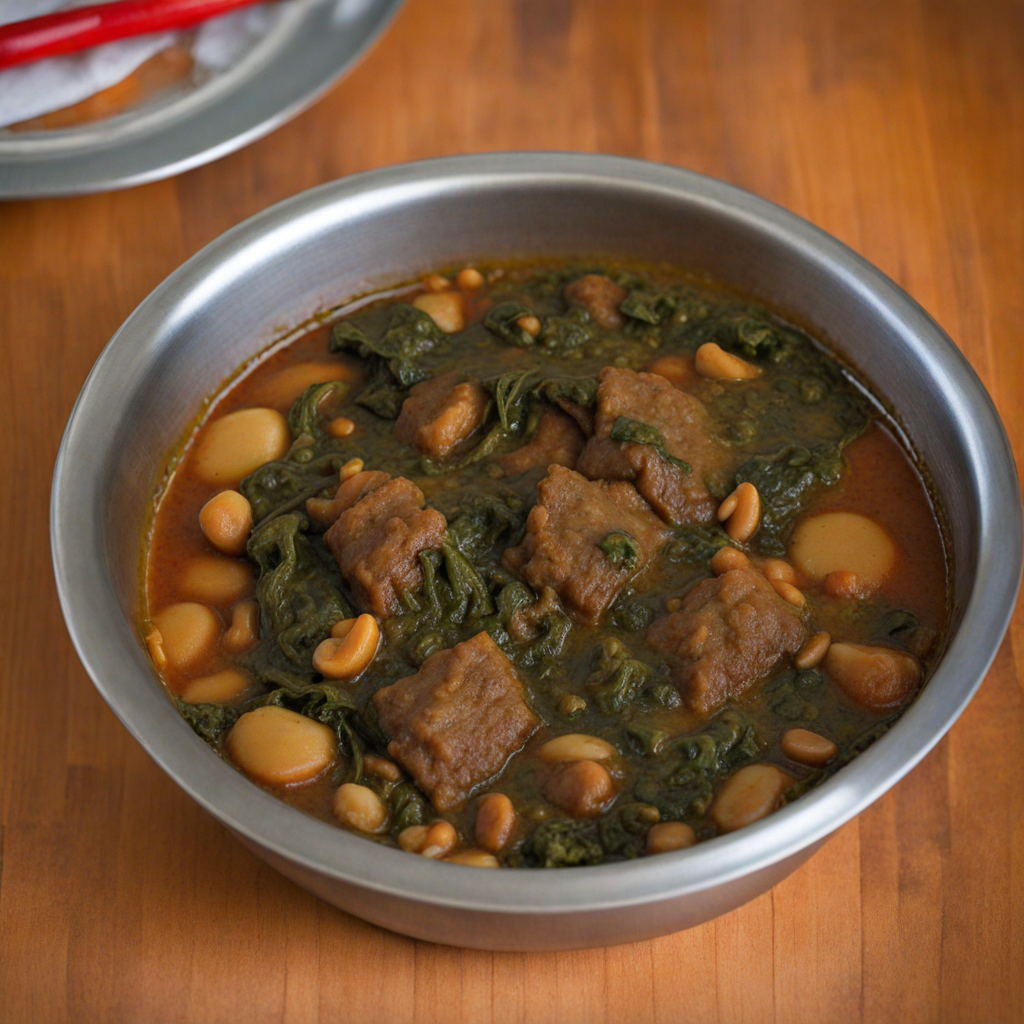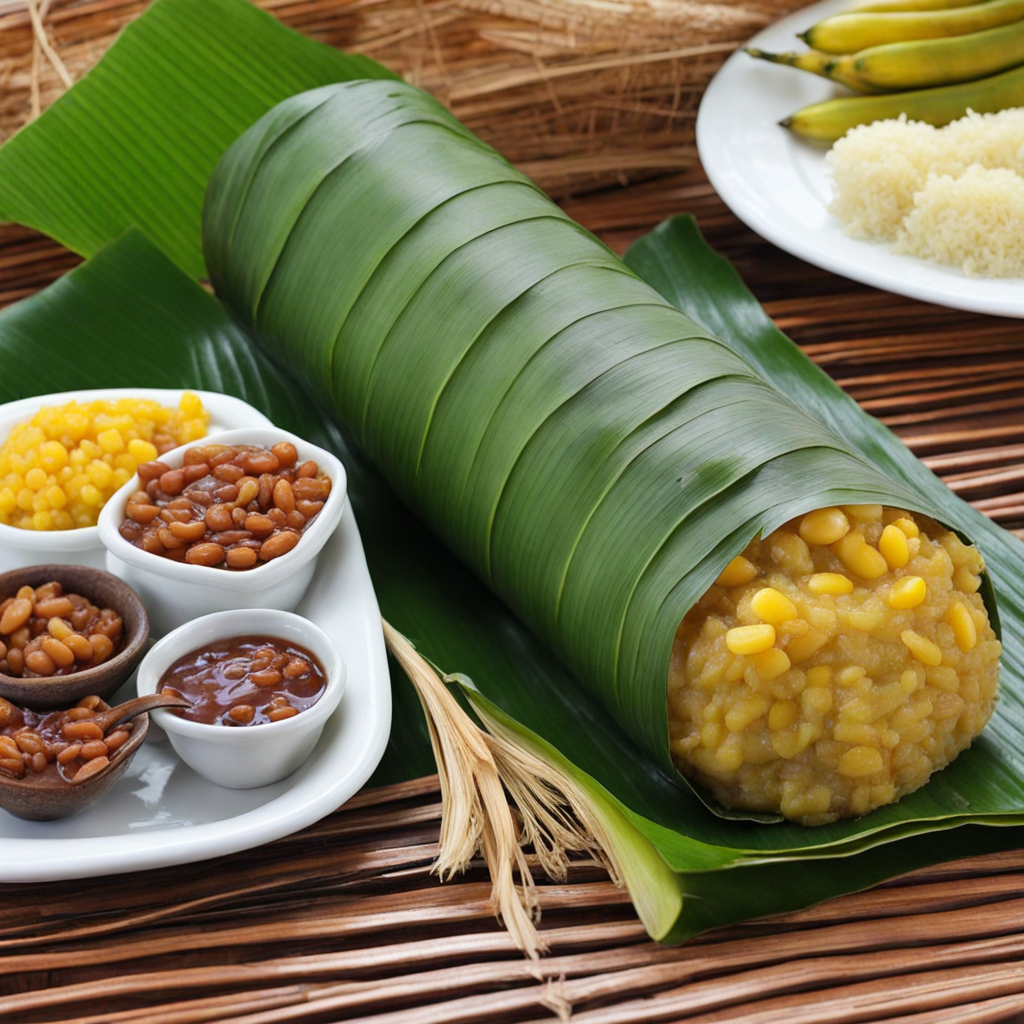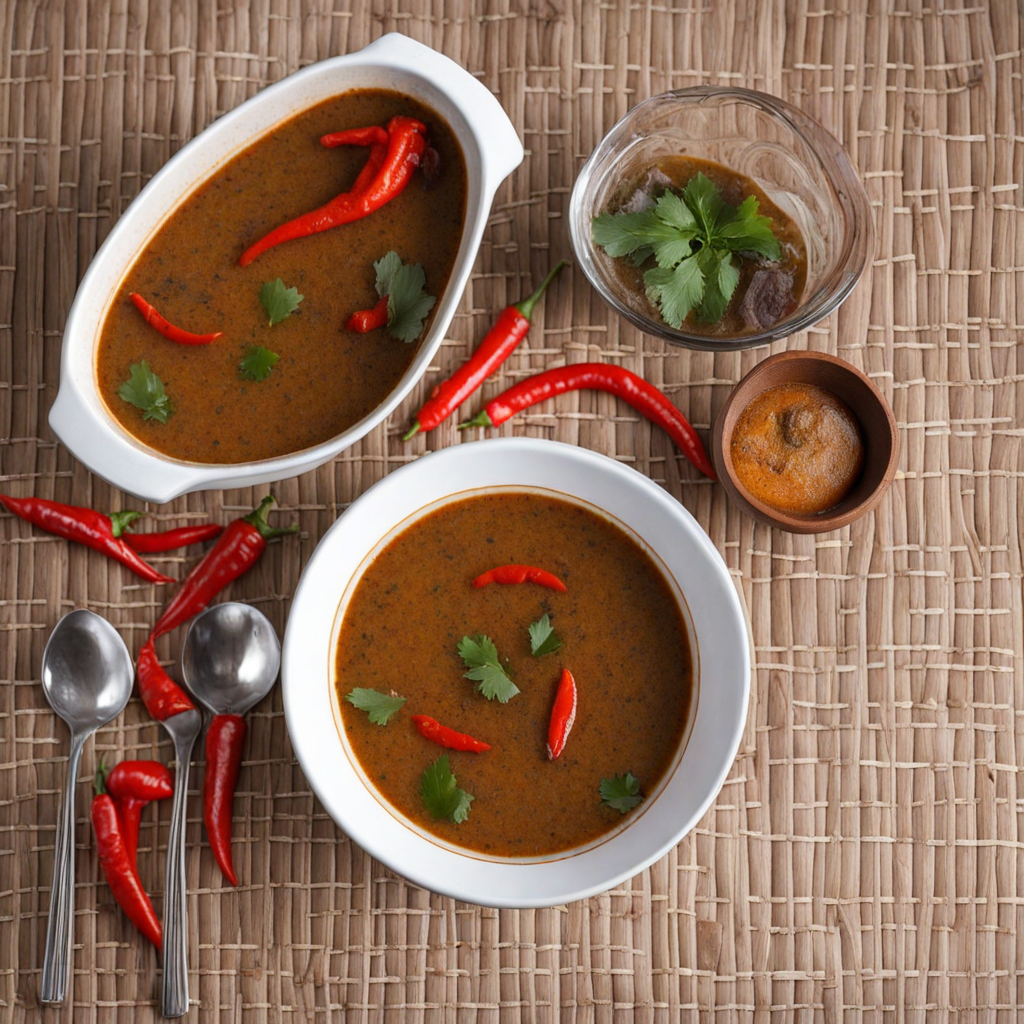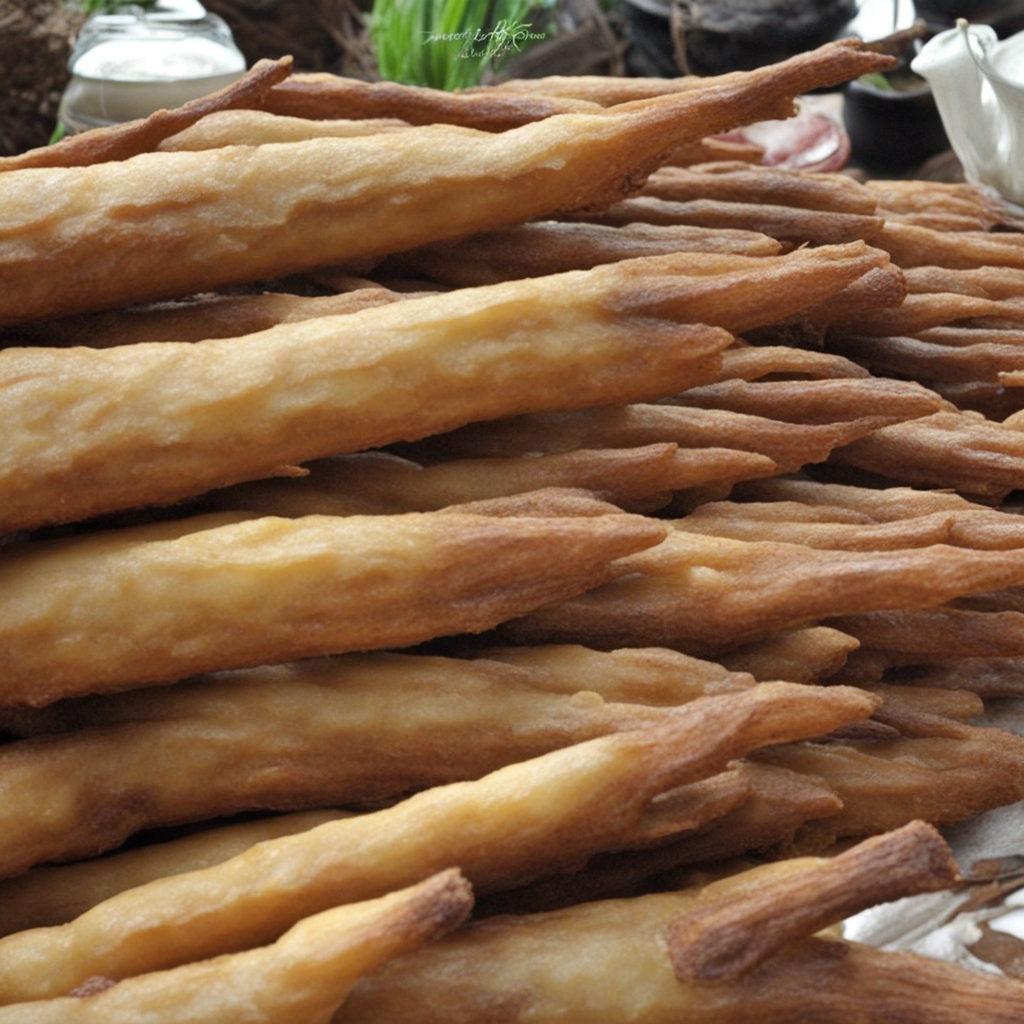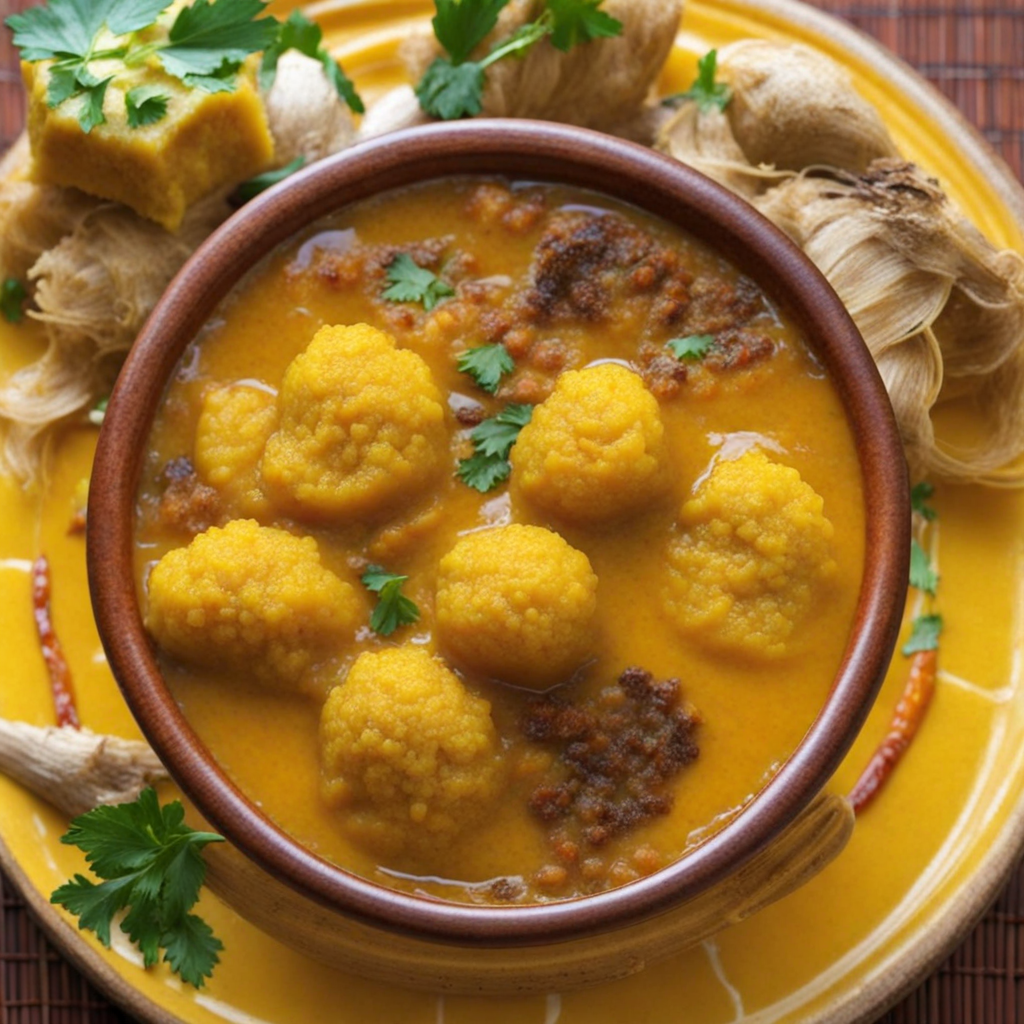Ndolé
Ndolé is a vibrant and flavorful dish that originates from Cameroon, showcasing the rich culinary heritage of the region. At its core, Ndolé is a stew made primarily from bitter leaves, typically sourced from the Vernonia amygdalina plant, which lends the dish its distinctive earthy and slightly bitter flavor. The leaves are often paired with a variety of proteins, such as fish, beef, or shrimp, creating a hearty meal that is both satisfying and nourishing. The combination of these ingredients, cooked together with spices like ground peanuts and palm oil, results in a dish that is aromatic and deeply comforting. One of the defining features of Ndolé is the use of ground peanuts, which add a creamy texture and a nutty flavor that beautifully complements the bitterness of the leaves. The preparation involves sautéing the bitter leaves with the protein of choice, alongside onions, garlic, and spices, allowing the flavors to meld together. This rich mixture is then finished with a generous amount of ground peanuts, creating a luscious sauce that envelops the other ingredients. The dish is often served with a side of plantains, rice, or couscous, making it a filling and well-rounded meal. Ndolé is not just a dish; it is a celebration of Cameroonian culture and community. Often enjoyed during gatherings and special occasions, it brings people together around the table to share in its unique flavors. The balance of bitterness, nuttiness, and savory elements makes Ndolé a delightful experience for those looking to explore new tastes. With its intricate preparation and rich flavors, Ndolé offers a window into the heart and soul of Cameroonian cuisine, inviting you to savor every bite.
How It Became This Dish
The History of Ndolé: A Culinary Treasure from Cameroon #### Origins of Ndolé Ndolé is a traditional dish from Cameroon, particularly prominent in the coastal regions and among the Beti and Ewondo peoples. Its origins can be traced back to the rich agricultural practices of the region, where various ingredients are cultivated, reflecting the diversity of the Cameroonian landscape. The primary components of Ndolé include bitter leaves—known locally as “ndolé” or “ndoleh,” which are derived from the Vernonia amygdalina plant—groundnuts (peanuts), and often fish or meat, creating a dish that is both nutritious and hearty. The use of bitter leaves in West African cuisine is not merely for their flavor; they are also revered for their medicinal properties, with historical accounts suggesting they were used to treat various ailments. This underscores the cultural significance of Ndolé, as it embodies a harmonious blend of nourishment and wellness that is central to traditional Cameroonian diets. #### Cultural Significance Ndolé holds a revered place in Cameroonian culture. It is often served during important ceremonies, celebrations, and communal gatherings, representing hospitality and shared heritage. The dish is not only a staple in everyday life but also a symbol of unity among different ethnic groups, showcasing the culinary diversity of the nation. In many households, preparing Ndolé is a communal affair, where family members gather to cook and share stories. This process of preparation fosters familial bonds and preserves culinary traditions passed down through generations. The dish's preparation varies from one region to another; for instance, in coastal areas, Ndolé is frequently made with fish, while inland variations may incorporate meat, reflecting the availability of resources and local preferences. #### The Ingredients of Ndolé Central to Ndolé's appeal is its unique combination of ingredients, which not only create a distinct flavor profile but also provide a balanced nutritional profile. Bitter leaves serve as the base, imparting a complex, slightly bitter flavor that is counterbalanced by the creaminess of groundnuts. The dish often includes a protein source, such as fish or meat, and is typically served with plantains or rice. The process of making Ndolé involves several steps, starting with the meticulous washing and preparation of the bitter leaves to reduce their bitterness. This is often achieved by boiling them multiple times, then draining the water. The groundnuts are roasted and ground into a paste, which adds richness and depth to the dish. The combination of all these ingredients creates a savory, aromatic stew that resonates with the tastes of local palates. #### Development Over Time As Cameroon has evolved through the influences of colonialism, globalization, and modern culinary trends, so too has Ndolé. The introduction of new cooking methods and the accessibility of various ingredients have led to innovative adaptations of the traditional recipe. For instance, while the classic Ndolé is made with locally sourced ingredients, urbanization has seen the use of alternative proteins such as chicken and beef, catering to modern tastes and dietary preferences. The rise of food tourism in Cameroon has also played a role in popularizing Ndolé beyond its traditional confines. As visitors flock to the country, they seek authentic culinary experiences, and Ndolé has emerged as a must-try dish. Restaurants and street vendors have begun to offer their unique takes on Ndolé, ensuring that the dish remains relevant in contemporary cuisine while honoring its roots. Moreover, the increasing awareness of healthy eating has revived interest in Ndolé due to its use of bitter leaves, which are rich in vitamins and antioxidants. This has prompted a new generation of cooks to experiment with the dish, emphasizing its health benefits and versatility in various culinary contexts. Social media platforms have further amplified this trend, with food bloggers and influencers showcasing Ndolé, contributing to its global recognition. #### Ndolé in Modern Cameroonian Cuisine In contemporary Cameroon, Ndolé continues to be a beloved dish, often featured in gatherings, festivals, and special occasions. It is not uncommon to find it served alongside other traditional dishes, creating a vibrant feast that celebrates the country's culinary heritage. The dish's ability to adapt while retaining its core elements has allowed it to thrive in a rapidly changing world. Moreover, Ndolé is increasingly being recognized as a dish that represents Cameroonian identity. Chefs and home cooks alike take pride in their family recipes, often attributing personal stories and memories to the preparation of this dish. As it gains international acclaim, there is a collective effort to ensure that Ndolé remains a symbol of Cameroon's rich cultural tapestry. #### Conclusion Ndolé is more than just a dish; it is a living testament to the culinary heritage of Cameroon, embodying the spirit of community, culture, and history. Its origins are deeply rooted in the agricultural practices of the region, and its preparation is a cherished tradition that fosters familial bonds. As it continues to evolve, Ndolé stands as a reminder of the importance of preserving cultural practices while embracing innovation. In a world that increasingly values authentic culinary experiences, Ndolé serves as an ambassador of Cameroonian cuisine, inviting people from all walks of life to savor its unique flavors and appreciate the stories woven into each bowl. Whether served at a festive gathering or enjoyed in the comfort of home, Ndolé remains a dish that nourishes both the body and the soul, a true culinary treasure from the heart of Africa.
You may like
Discover local flavors from Cameroon


